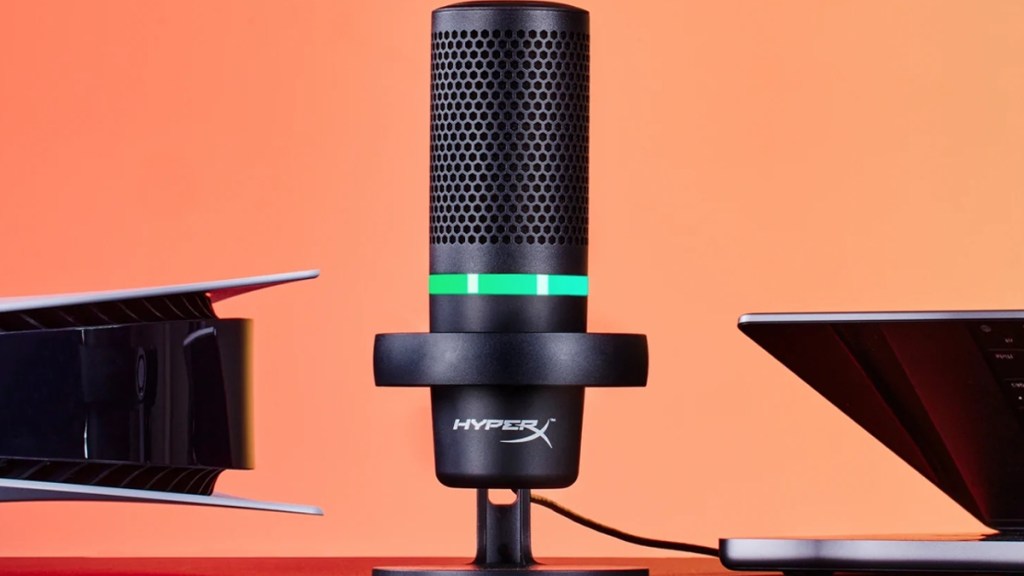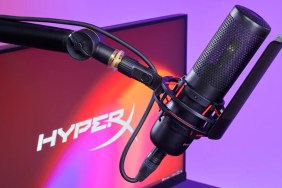The HyperX DuoCast sits between the SoloCast and QuadCast as a sub-$100 USB microphone aiming to provide great audio quality in addition to RGB flair, while having a small footprint that doesn’t impose on a gaming or streaming setup. It does a lot right, though there are some niggles that potential buyers will want to consider.
Twice as nice
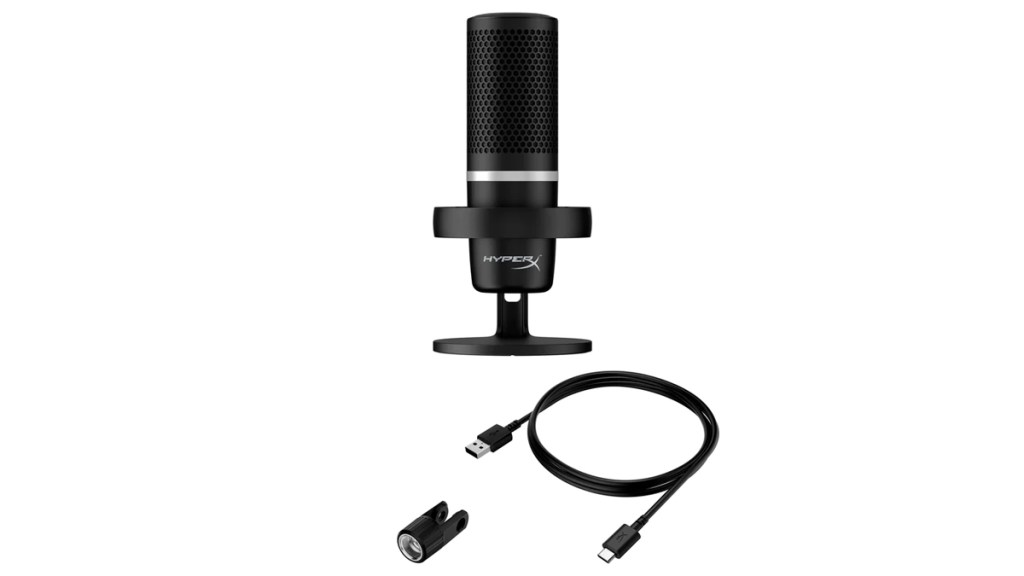
Inside the box, the HyperX DuoCast microphone and its included shock mount and stand are joined by a USB-C cable and an adapter for mounting to a boom arm. That’ll be everything users need to get started with the DuoCast, though I’d also recommend a pair of headphones/earphones for monitoring your audio through the included 3.5 mm jack.
Buy the HyperX DuoCast on Amazon.com
Though coming with its own shock mount is definitely a bonus, as it helps reject unwanted noises from bumping the desk and whatnot, it does mean that the DuoCast can be very wobbly. It’s not something that I noticed with the QuadCast, so I’m surprised that it’s so jarring to me here. Perhaps there is less tension in the DuoCast’s shock mount strings? It’s hard to identify why exactly, but yes, this mic can go on a bit of a wobble. This by no means impacts the sound, but it could look a little odd on stream.
RGB done right
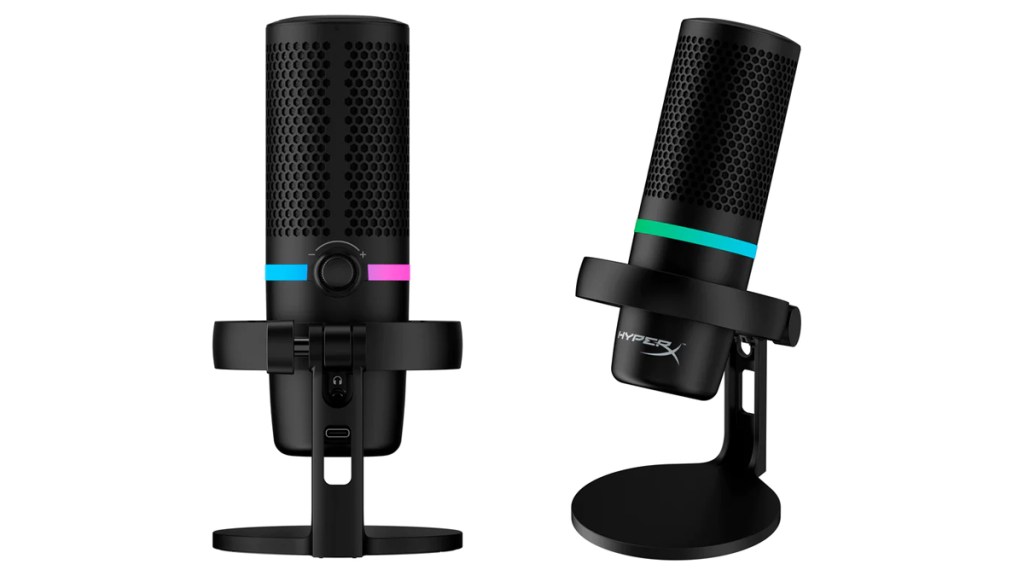
After I plugged it in for the first time, I was pleased to see the tasteful RGB implementation. It defaults to a rainbow wave, diffused slightly by the cloudy material. However, users can install the optional NGENUITY software to further personalize the lighting. This application also allows for the tuning of mic gain, mic mute, output volume, and polar pattern, which is nice if you don’t want to use the physical controls on the microphone itself.
Additionally, NGENUITY allows users to enable a high pass filter to cut lower frequencies, which is useful for those trying to chop out any unwanted rumble from their voice. This comes in particularly handy for those getting right up on the mic to maximize the proximity effect, which makes the audio richer but can also introduce unwanted boominess.
Capture this
Putting the “Duo” in “DuoCast” are the two available polar patterns. The first is cardioid, which is likely to be the primary choice for most users. This captures sound from the front of the microphone only, rejecting side and background noise. This is ideal for those recording single-person audio, perhaps for content creation or for a livestream.
The other available polar pattern is omnidirectional. This welcomes audio from all directions, capturing from the front, sides, and back. This is useful for multi-person recording sessions when you just have one microphone. Say, for example, you’re a streamer who normally uses cardioid but you have two guests, one sat on either side of you, whose voices you want captured clearly, you can push the knob on the mic’s rear (or hit the toggle in the NGENUITY app) to switch over to omnidirectional.
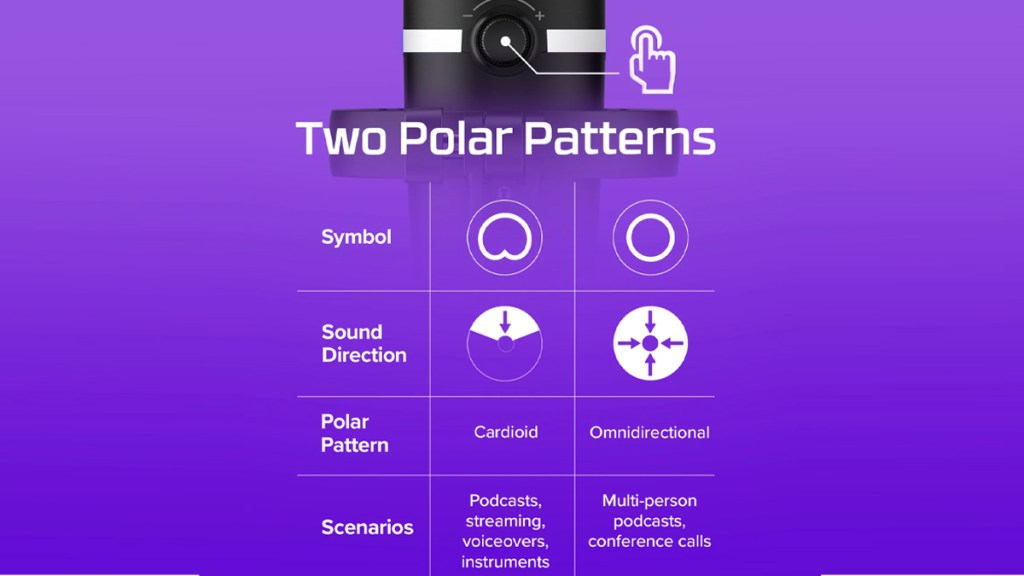
As is usual, I find the omnidirectional sound quality to drop a little when compared to what’s captured through cardioid. To me, it sounds a little more sibilant, with harsher higher frequencies emphasizing my “S” and “T” sounds a little too much. It’s a nice mode to have in a pinch, but I’d recommend sticking to cardioid unless omnidirectional is deemed absolutely necessary.
Mute yourself
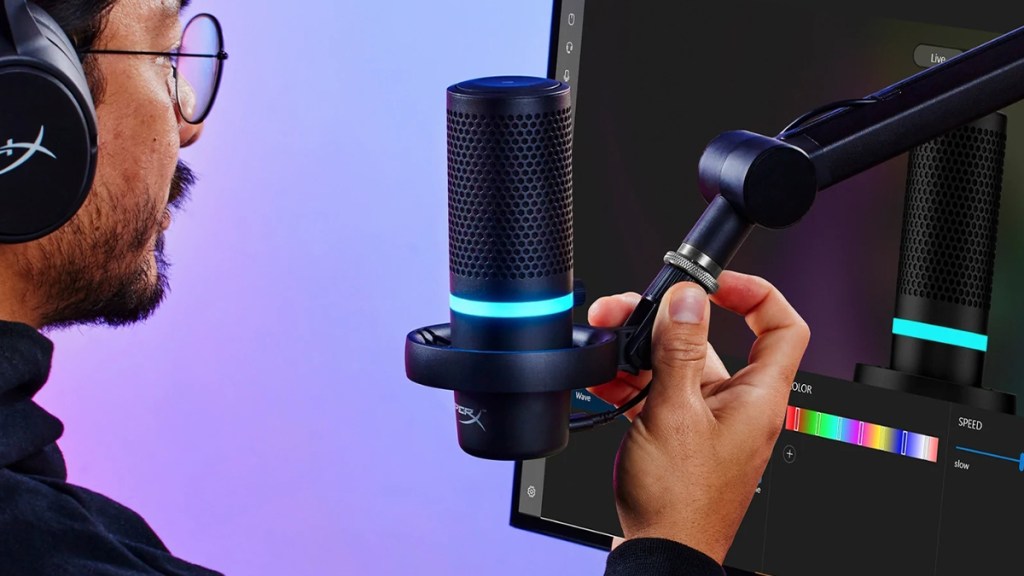
That little knob on the back can also be rotated to control mic gain. I’m usually opposed to combining mic gain controls with another function on the same knob, as I hate accidentally altering the gain while trying to toggle the other function. However, the knob’s rotation is stiff enough that it avoids being accidentally rotated, and changing the polar pattern isn’t something that most users will be doing often.
The only other button boasted by the DuoCast is the mic mute found on the top. I’m a big fan of this, as it’s a capacitive touch button that instantly triggers from a slight brush of a finger. This is great for muting during a livestream, where the click of a mute button can often be captured and sent out to the audience, which can be quite jarring. I also love how the mic mute disables the RGB lighting, making it very clear when the microphone is muted and when it is unmuted.
I hope you like black
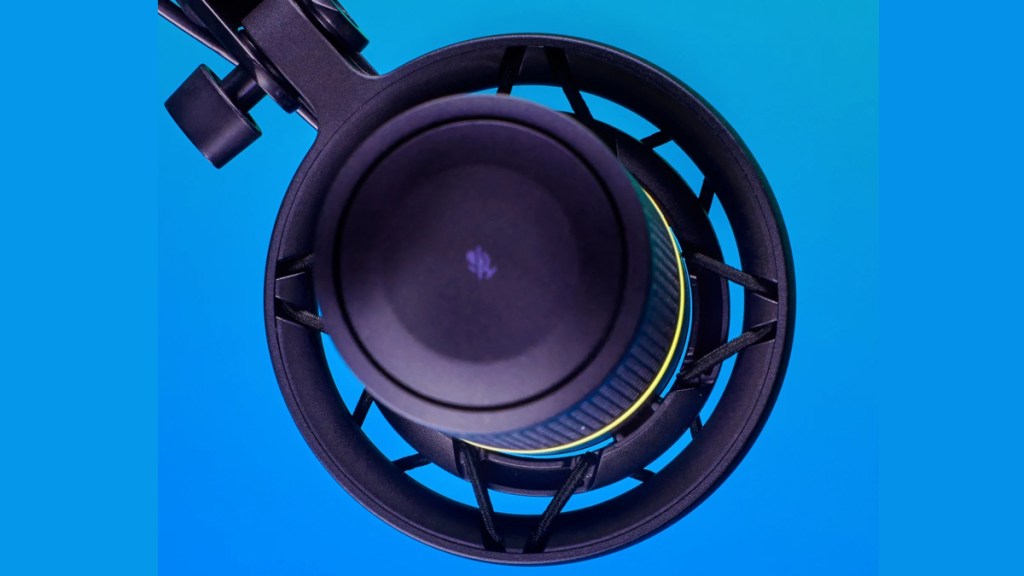
I’m surprised at the lack of a white version of the DuoCast. Both the SoloCast and QuadCast S now enjoy white variants which I think look incredible and are well-suited to the on-trend clean and minimal setups that incorporate a lot of white components. The DuoCast, however, has launched only in black. I imagine this is just a temporary situation, with HyperX working on the white version and aiming to launch it soon, but this mic is currently only available in black.
DuoCast review sample was provided by HyperX.
Final Verdict
The HyperX DuoCast is a solid-sounding microphone with some well-implemented features, highlights of which include the capacitive mute switch and tasteful RGB lighting. However, its shock-mounted body can be a bit wobbly, which you may or may not care about.
Also, at $99.99, the DuoCast is actually priced above the regularly featured sale price of the QuadCast (non-S version) which may be a smarter purchase.
Overall, the DuoCast joins a lineup of fantastic mics which continue to be my go-to for those looking for bang-for-the-buck USB microphone recommendations. HyperX delivers in all of the right places with only the smallest of niggles compromising otherwise brilliant products.
Positives and Negatives
-
Solid audio quality.
-
Fantastic mute switch.
-
Tasteful RGB implementation.
-
Latest version of NGENUITY works great.
-
Only available in black… for now.
-
Awkward pricing compared to the regularly discounted QuadCast.
-
Omnidirectional audio quality becomes a little too rough.
-
*Wobble, wobble*
